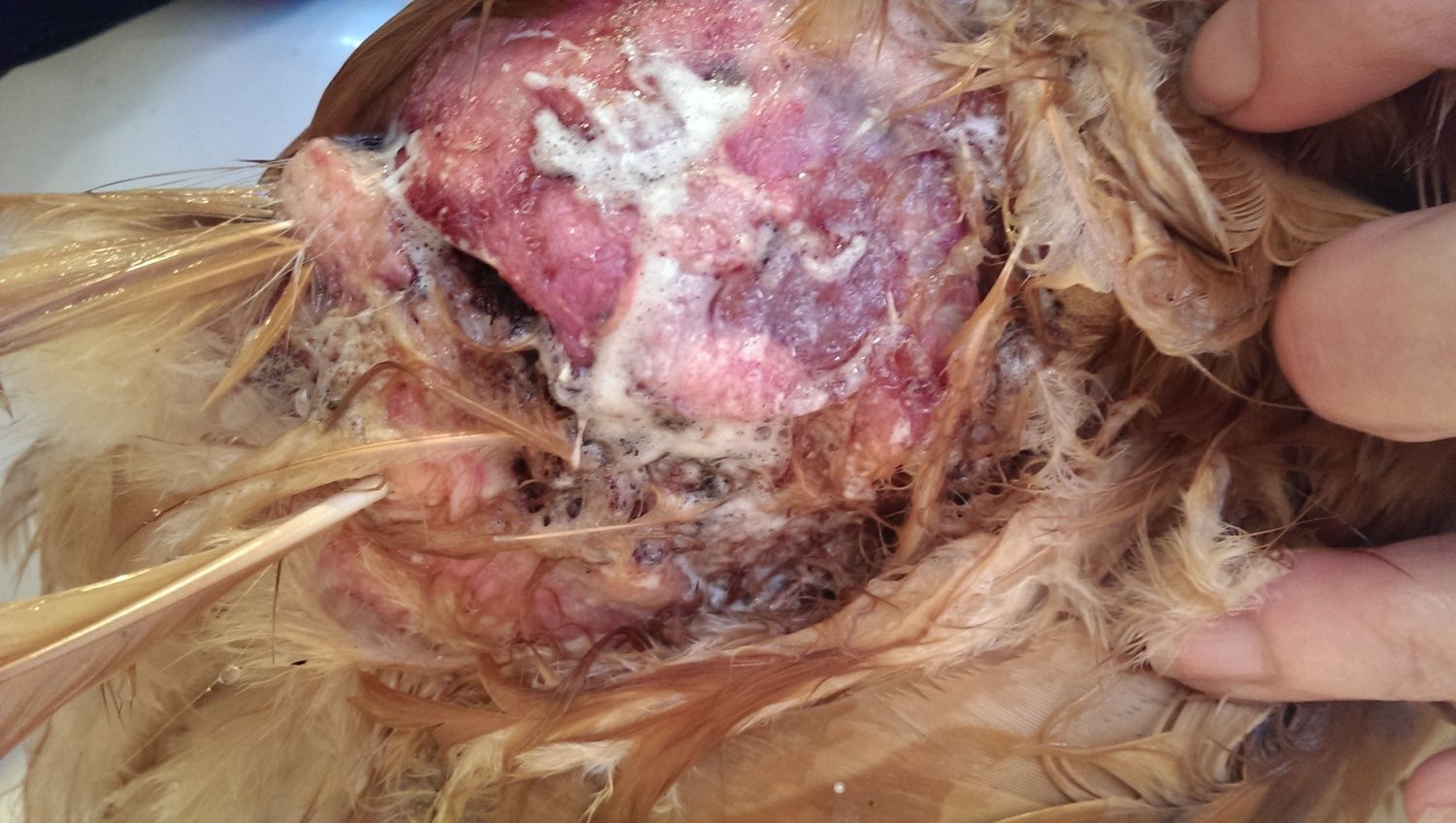- Dec 17, 2011
- 55
- 12
- 106
Sorry this photo is brutal. The white parts are the hydrogen peroxide bubbles.
I came home last night from work and found our poor New Hampshire red hen had been attacked during the day. This is the first time any predator has attacked our girls, and I'm clueless. From the location and size of the bites (on her back, at the base of her tail), I'm guessing she was attacked by something on the ground that chased her rather than a bird of prey.
1. Is there any hope for her?
2. I poured hydrogen peroxide on it last night. I washed it with soapy warm water and poured more peroxide again this morning. She is in a dog crate inside the house to keep it clean, prevent flies from getting on it, and separate her from the other hen. (Other hen is secured in the coop....no free-ranging.)
3. The local vet said he doesn't treat chickens.
4. There is a farm supply store in the next town over. I will buy VetRX, Rooster Booster, and Blu-Kote later this morning.

THANK YOU for any help you can provide!!!
I came home last night from work and found our poor New Hampshire red hen had been attacked during the day. This is the first time any predator has attacked our girls, and I'm clueless. From the location and size of the bites (on her back, at the base of her tail), I'm guessing she was attacked by something on the ground that chased her rather than a bird of prey.
1. Is there any hope for her?
2. I poured hydrogen peroxide on it last night. I washed it with soapy warm water and poured more peroxide again this morning. She is in a dog crate inside the house to keep it clean, prevent flies from getting on it, and separate her from the other hen. (Other hen is secured in the coop....no free-ranging.)
3. The local vet said he doesn't treat chickens.
4. There is a farm supply store in the next town over. I will buy VetRX, Rooster Booster, and Blu-Kote later this morning.
THANK YOU for any help you can provide!!!




